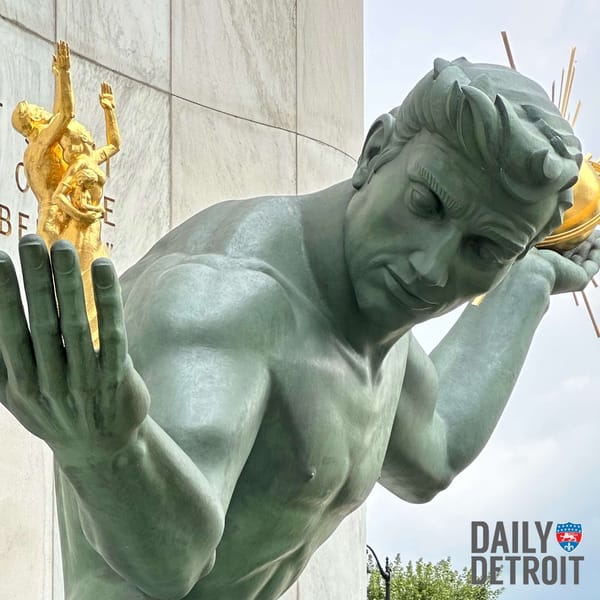It’s not hard to think that there is a concerted push for more QLINE routes, especially in Greater Downtown.
It’s important to watch because when they focus, what major funders want they often get in this town and money starts to appear.
The latest hint of a new QLINE route would be from downtown to the old Michigan Central Train Station, as Matthew Maroun (the son of Billionaire Matty Maroun) hinted in a long interview interview with Crain’s as part of their coverage for their Homecoming event being held in said train station.
The basic idea is use the station for what it was built for – a train station – to connect Detroit to Metro Airport. Then the historic depot would be connected to downtown via streetcar.
Here are a couple more dots to connect over time.
Matt Cullen, who wears a variety of hats including working for Rock Ventures and the Detroit Riverfront Conservancy, in an interview with me up at Mackinac Policy Conference talked about expanding routes down Jefferson and Gratiot.
I think that it was always intended to be part of a broader framework. We think that there’s a lot of opportunities to expand the streetcar kind of piece, like in the Core downtown, it could be up Gratiot, it could be along Jefferson, could do some things like that. The streetcar as far as the small connector kind of thing, we think should continue to expand. Then directly to your question, the streetcar/light rail should absolutely be extended along Woodward into the suburbs over time. Ideally, up to 59. That was the initial plan, right? So that’s what we need. This is a small first step, but it’s an important one.
Not to mention, the Freep has seen preliminary plans for a Jefferson streetcar.
This is a consistent rumble: There’s always chatter to filter signal from noise in this town, but it seems like the leadership class has made the bet that this streetcar is going to be the one that’s expanded, and from conversations, it’s mostly in the greater downtown area.
Anti-bus bias: The Detroit region has a heavy cultural anti-bus bias, and an extensive bus program that’s paid for outside of government dollars most likely won’t pass political muster, regardless of the viability on paper.
After all, part of the reasoning for putting private dollars in is the belief streetcars spur more real estate development and kick up real estate values. A physical track, to a developer, feels more real.
Add to that from an Regional Transit Authority perspective (who knows if that’s going to be a thing on the ballot in 2018), a bus – even bus rapid transit — is still a bus in the minds of most here, especially in the suburbs, despite there being significant differences between a rapid bus and what we see on our streets today.










